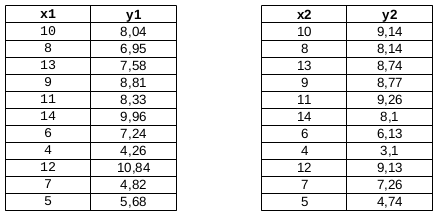Given two sets, lets say:
Can I say that they are related to the same phenomenon, given their mean and correlation?
P.S.: Both sets have same correlation (x1 and y1; x2 and y2)
P.S.2: x1 and x2 have the same mean, so as y1 and y2
This question was related with Anscombe's quartet. More info about it here: https://en.wikipedia.org/wiki/Anscombe%27s_quartet
But I'm still looking for some details. Descriptive statistics alone is not enough here, so what must we use? Plot data? Some advanced regression models? I know we should go further, but to where?



